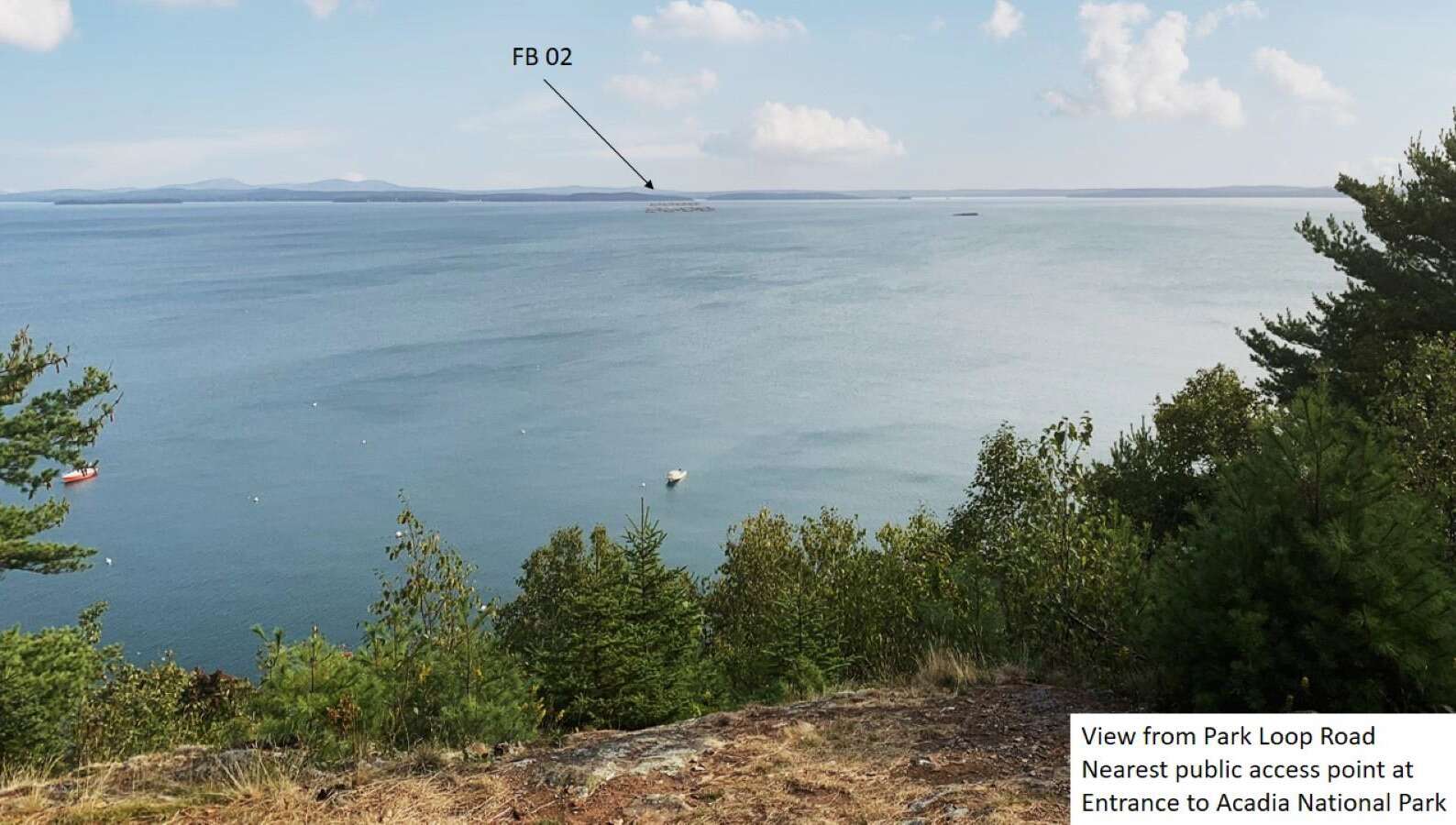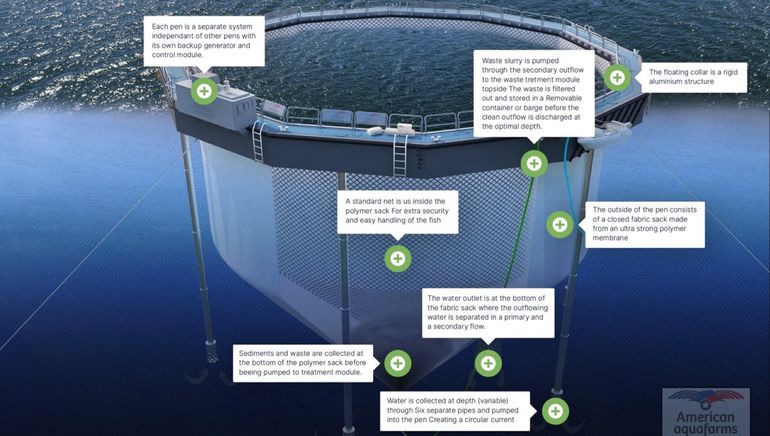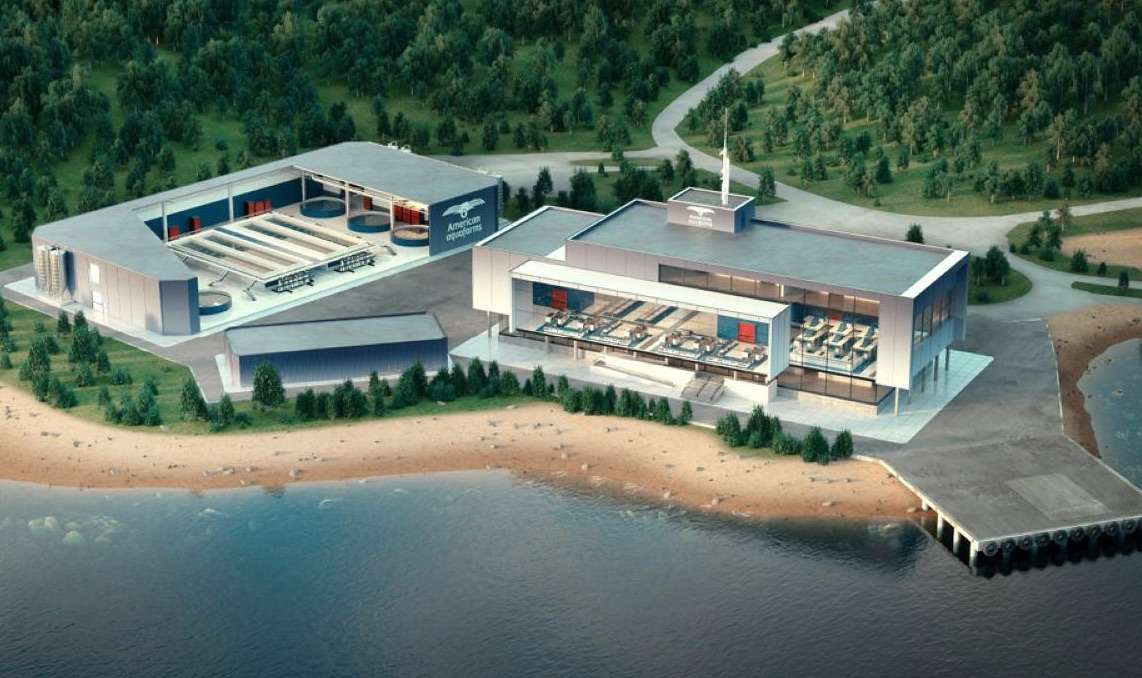
‘Next-gen’ tech or industrial destruction? Salmon farm proposal advances, but groups protest
 Courtesy / American Aquafarms
This schematic shows how various components of a closed salmon pen work.
Courtesy / American Aquafarms
This schematic shows how various components of a closed salmon pen work.
The Department of Marine Resources has accepted applications for consideration of two lease sites in Frenchman Bay where a Norwegian company wants to grow Atlantic salmon.
But the applications from American Aquafarms were immediately met with opposition from several groups of local residents.
“We are opposed to growing 30,000 metric tons of salmon annually, covering over 100 acres of Frenchman Bay,” Kathleen Rybarz, president of Friends of Frenchman Bay, said in a news release.
“One cannot overstate the destructive impact of this large-scale proposal on a bay that already strives to balance multiple fisheries, heavy recreational use, cruise ship visitors and increasing ocean warming."
Next-gen
American Aquafarms intends to produce salmon in the waters off Bar Harbor using "closed pen" technology. According to the applications, closed pen systems have been developed and used for 30 to 40 years in Norway and have become more commonplace in the last five to six years.
While open pens are usually lower in cost, Norway often incentivizes the use of more habitat-friendly closed pens through a special “green license.”
“Closed pen technology is however increasingly being implemented by several well-established companies in many parts of the world,” the application says.
Closed pens represent the “next generation “ of fish farms, the application says.

Norway is the world’s leading producer and exporter of salmon.
66 million pounds
If approved, American Aquafarms would gradually increase production over time until eventually producing 30,000 metric tons, or 66 million pounds, of salmon, which would be processed locally for domestic U.S. markets, according to the applications.
The company projected that it would take 20 months after the first closed pen is in operation before the facilities reach full operation. Total investment in the project is estimated at about $300 million.
American is designing the equipment to be used, with attention to minimizing visual impacts, according to the application.
120 acres
Each site of about 60 acres would be used to raise salmon in closed pens. Each system of 15 pens plus a site for an operations barge would account for about 10 acres of each lease. The total size for the two leases accounts for the mooring field necessary to hold the closed pens securely in place.
The salmon would then be processed on land at a facility in Gouldsboro, currently owned and operated by Maine Fair Trade Lobster. American has an option to buy the property.
American Aquafarms was launched in Portland last year by Mikael Rones, CEO of Global AS, which is based in Trondheim, Norway. The proposal calls for building a salmon hatchery as well as farming and processing facilities on the site and operate closed deep-water pens for raising fish

The Department of Marine Resources oversees aquaculture lease applications.
According to American Aquafarms, closed-pen, ocean-based systems address challenges seen in the traditional “open pen” aquaculture industry by controlling waste and preventing fish escapes, eliminating the threat of sea lice and reducing the need for harmful chemicals.
“Closed pens provide a controlled growing environment for our fish, and no antibiotics are needed to raise fish in these pens,” the application says. “Through vaccination, the fish can be raised without the need for medicines and harmful chemicals. Our state-of-the-art treatment removes particulates and uses custom technology to treat the remaining waste prior to discharge.”
Wrong place?
But local groups cited proximity to Acadia National Park and to small-scale maritime activities as reasons for concern.
“This is simply the wrong place for acres and acres of large, unsightly sea pens, and we especially shouldn’t let the Maine coast be used as a guinea pig for the unproven technology this applicant plans to use,” said James Paterson, a year-round resident of Hancock and a member of a group called Save the Bay.
Frenchman Bay supports a lobster fishery, small-scale aquaculture like oyster, mussel, and kelp farming, and tourism and recreational activities, Paterson added.
“All the things that make this bay special to Maine people and visitors from around the world and all the people whose livelihoods depend on a clean, healthy bay are threatened by this ill-conceived proposal,” he said.
Ben Walter, a member of Friends of Schoodic Peninsula said he was concerned about the potential for “incessant, jarring, generator din” coming from the operation.
Crystal Canney, executive director of Protect Maine’s Fishing Heritage Foundation, a statewide fishery coalition based in Portland, said her group opposes the project and has heard from more than 30 lobstermen who fish in Frenchman Bay.
“They are concerned about the loss of bottom but also concerned that the rules and regulations at the Department of Marine Resources are risking the livelihood of a $1.6 billion industry,” she said.










0 Comments